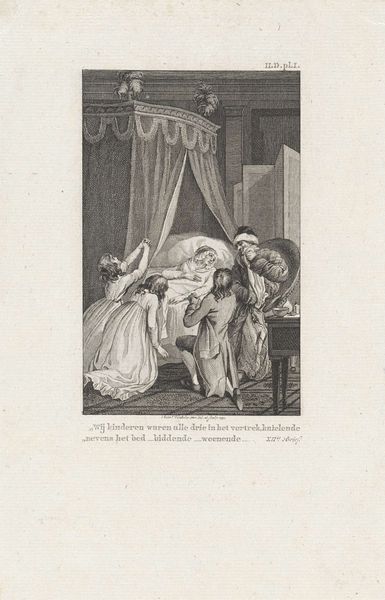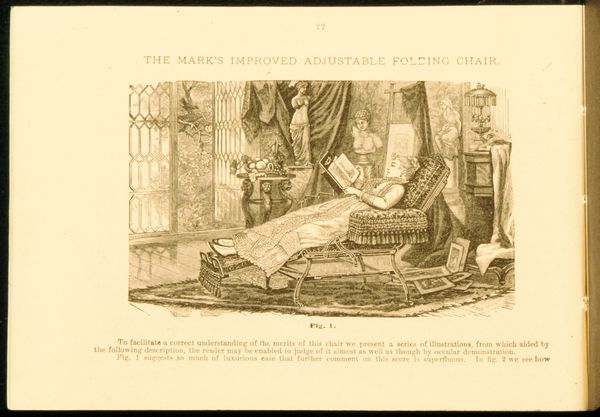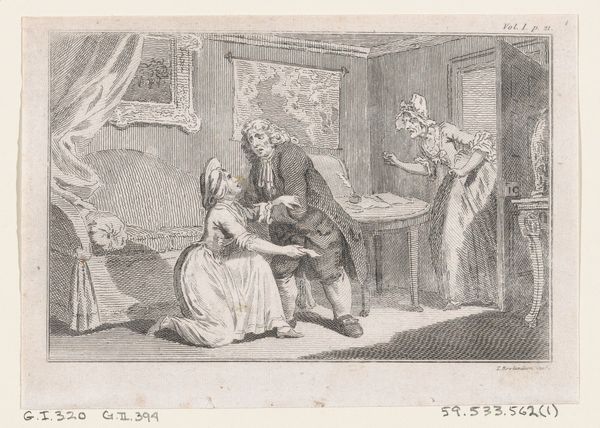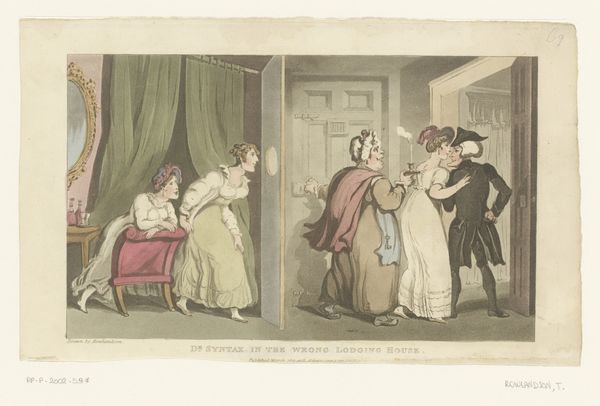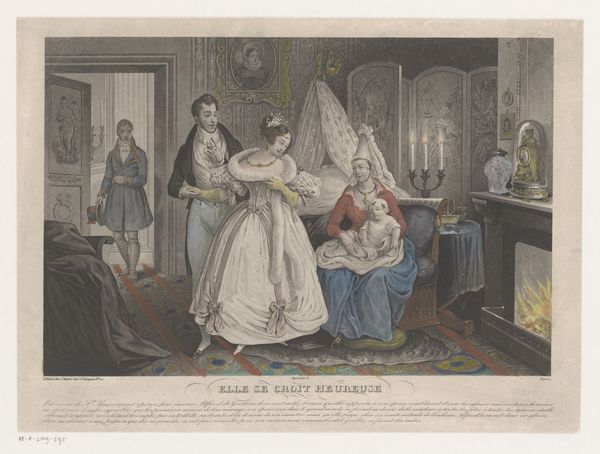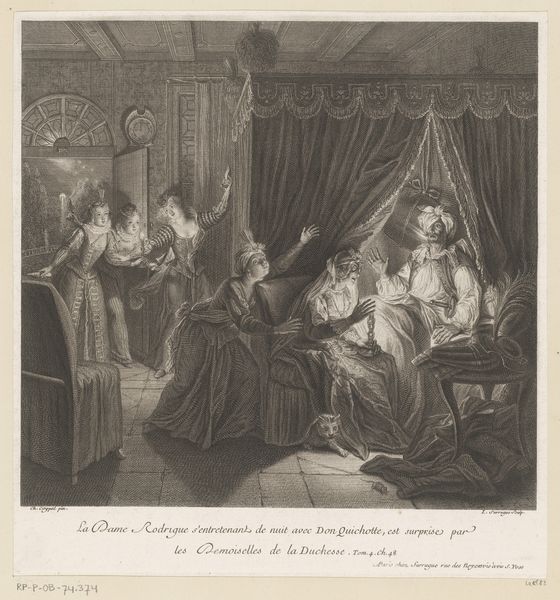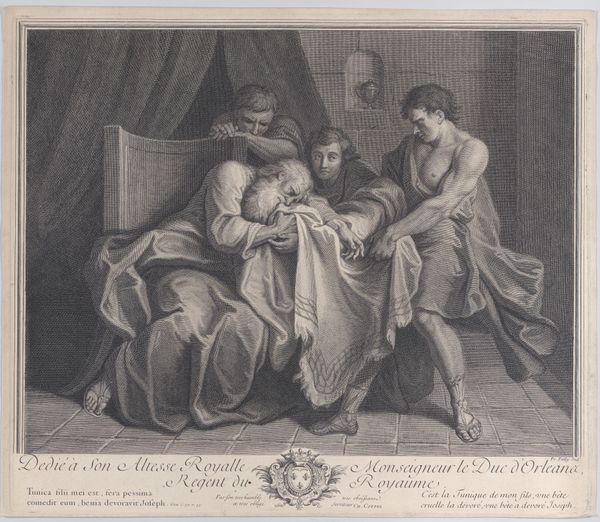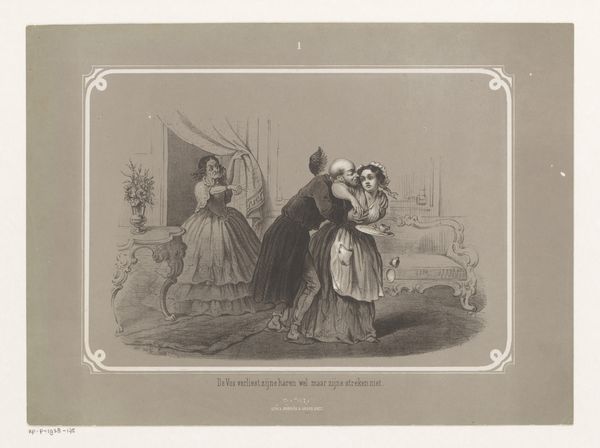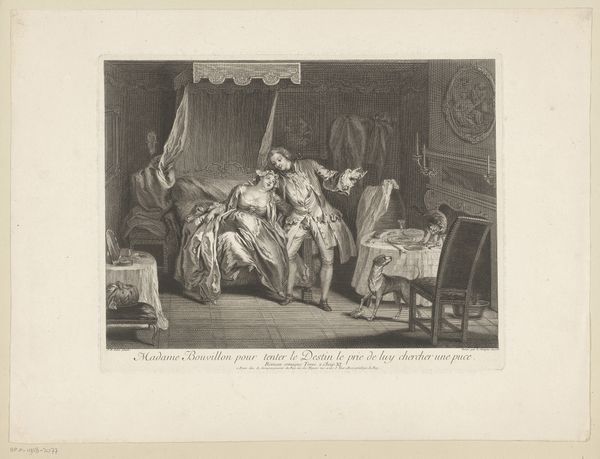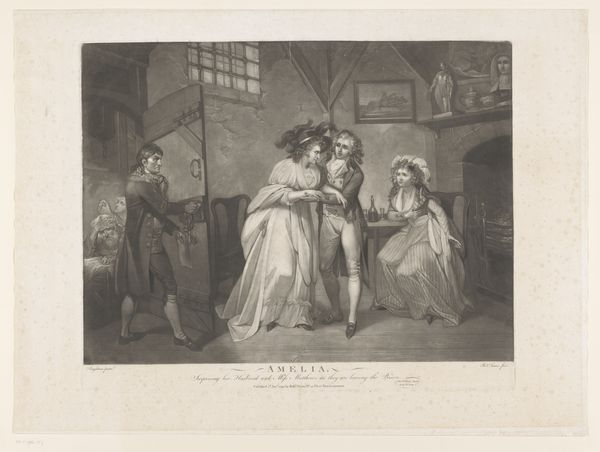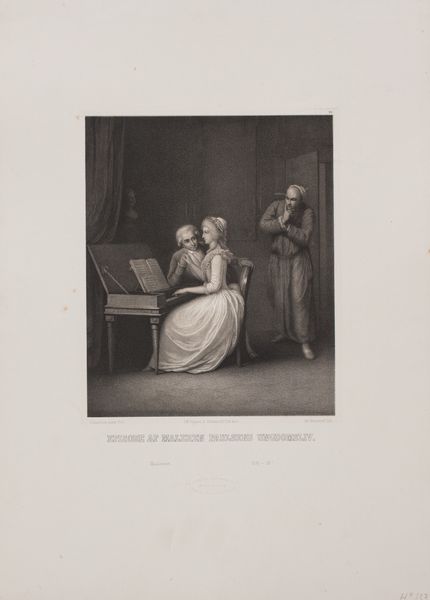
drawing, watercolor, pen
#
portrait
#
drawing
#
caricature
#
watercolor
#
romanticism
#
pen
#
watercolour illustration
#
genre-painting
#
cartoon carciture
Dimensions: height 148 mm, width 244 mm
Copyright: Rijks Museum: Open Domain
Curator: This is "Doctor Syntax rouwt om zijn overleden vrouw", or "Doctor Syntax Mourning His Deceased Wife" by Thomas Rowlandson, made between 1820 and 1821. It's currently held at the Rijksmuseum. Editor: Well, immediately the sweeping theatricality hits you. The elongated figures, the almost absurd display of grief. Is this supposed to be funny? Curator: In part, yes. Rowlandson was a master of caricature. This drawing, rendered in pen, watercolor, and ink, presents a scene from the popular "Doctor Syntax" series, poking fun at societal conventions and personal foibles. The labor involved in the creation of these works, often intended for mass reproduction as prints, highlights the democratization of art during the period. Editor: The composition certainly directs our eye. From the swooning women attending the deathbed to the bereaved doctor kneeling, all lines converge on the central figure of the departed wife. The stark white of her shroud emphasizes her stillness, a visual contrast to the exaggerated gestures of the living. Curator: Notice, too, the setting. We aren't simply presented with a scene of mourning; we're shown the material reality of death within a specific social stratum. The canopied bed, the window overlooking the world outside – these details root the emotional display in a tangible context, making the experience of grief not universal, but specifically bourgeois. Rowlandson uses satire to critique the performance of mourning itself, laying bare its cultural artifice. Editor: Absolutely, and look at how he uses color – muted greens and browns to establish a somber atmosphere, punctuated by that intense white. It’s a carefully constructed visual language meant to amplify the scene’s emotional weight, even if that weight is laced with irony. The contrast pulls the eye, generating an interesting tension. Curator: I find Rowlandson's exploration of emotional expression within the context of industrial production particularly relevant. By transforming grief into a commodity, he compels us to question what loss, or love, really mean under the lens of market forces. Editor: I'm struck by how the formal elements create such a clear, decisive narrative—despite its being laced with commentary. The deliberate exaggerations of expression feel... almost grotesque, but visually striking. Curator: Considering the socio-economic realities Rowlandson was critiquing adds to the work's relevance today. Editor: I’d agree. The balance Rowlandson strikes—or perhaps intentionally unbalances—makes for a piece that both fascinates and unsettles, forcing us to unpack layers of representation.
Comments
No comments
Be the first to comment and join the conversation on the ultimate creative platform.

